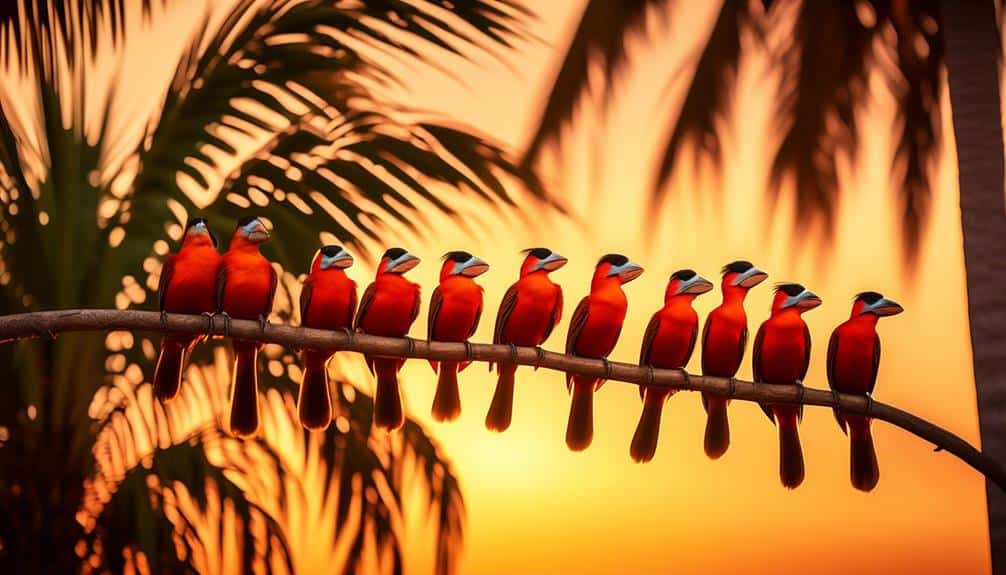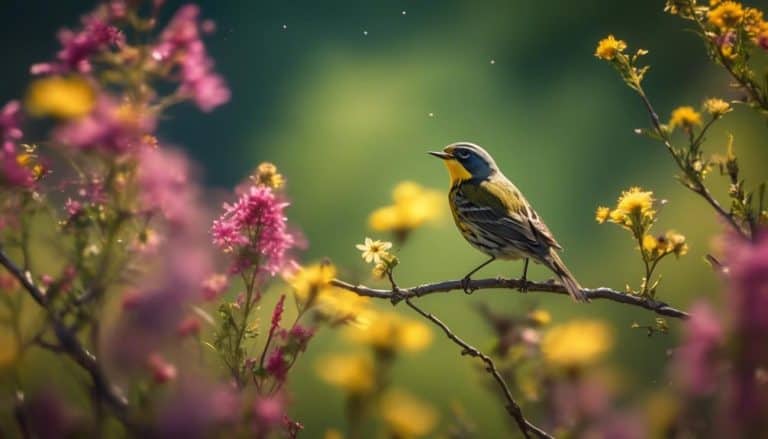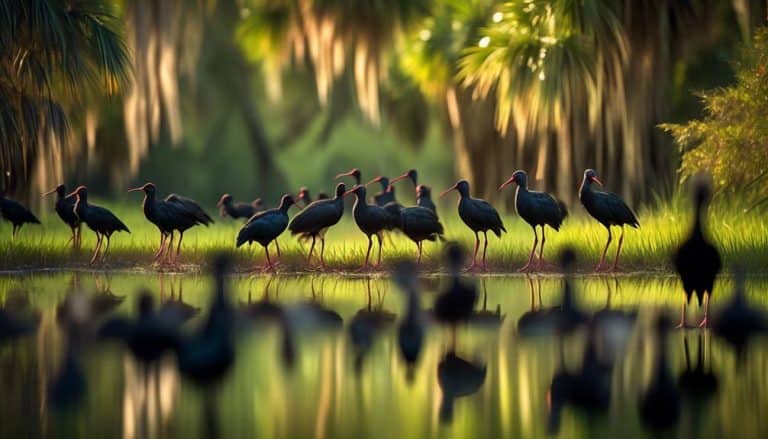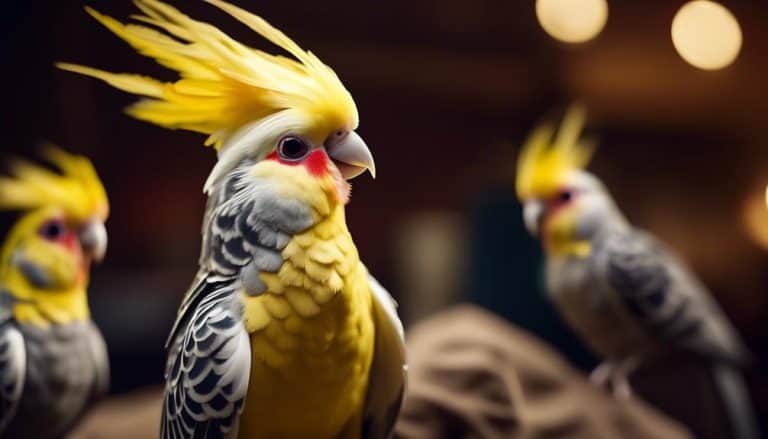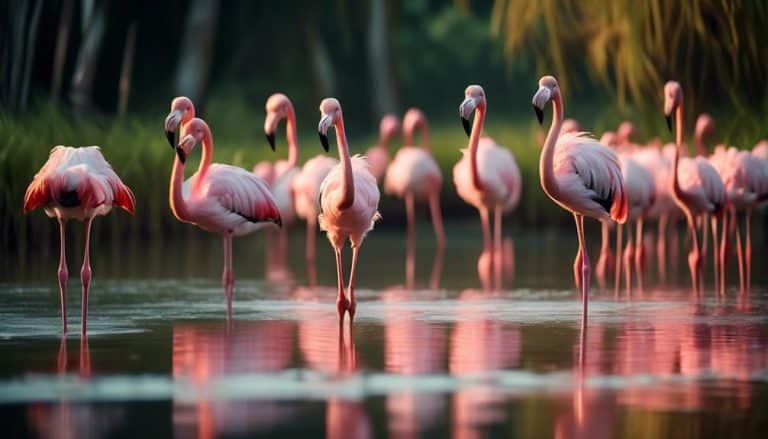As a bird enthusiast, I have been fortunate enough to witness some truly remarkable sights in my travels.
However, nothing quite compares to the breathtaking beauty of the red breasted birds found in Florida. These vibrant creatures are like living gems, adding a touch of brilliance to the already stunning landscape.
But what makes these red breasted birds so special? Well, let's just say that their striking colors are just the beginning of their fascinating story…
The Red Cardinal: Florida's Iconic Bird
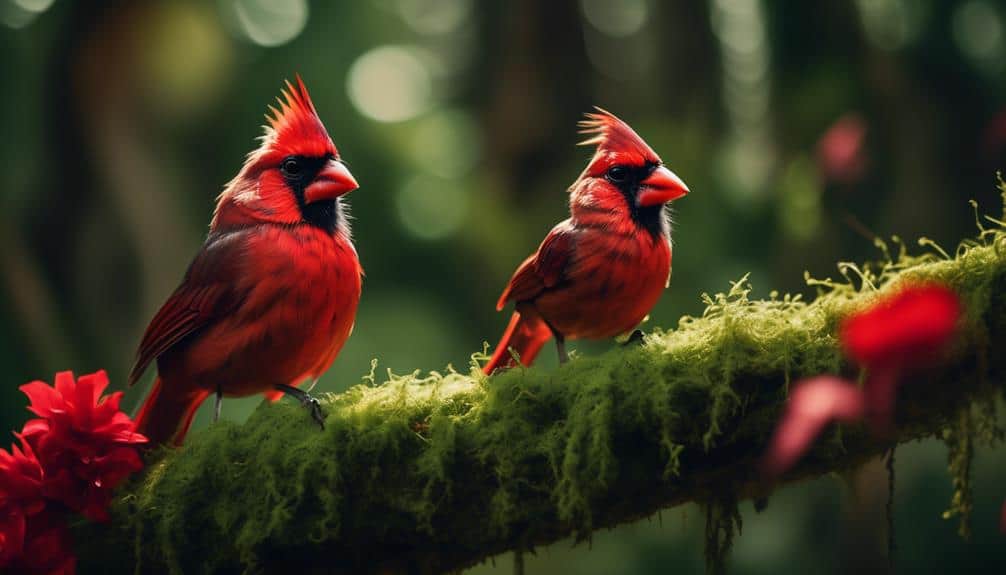
The Red Cardinal, Florida's iconic bird, is a stunning species known for its vibrant red plumage and melodic songs. Florida is home to a large population of these beautiful birds, with their bright red feathers making them easily recognizable. The Red Cardinal is a permanent resident in the state, meaning it doesn't migrate like many other bird species.
However, there are still some interesting patterns in their movements. During the breeding season, which typically begins in early spring, male cardinals become very territorial and defend their nesting areas vigorously. They'll sing their melodious songs to attract females and establish their dominance. Once a mate is chosen, the female will build a nest in dense vegetation, usually low to the ground. The female lays a clutch of eggs, typically between three and four, and both parents take turns incubating them.
While the Red Cardinal doesn't migrate, there's evidence to suggest that some individuals may disperse to nearby areas during the non-breeding season. This movement is thought to be influenced by factors such as food availability and habitat conditions. However, more research is needed to fully understand the migration patterns of Florida's cardinal population.
The Scarlet Tanager: A Vibrant Visitor
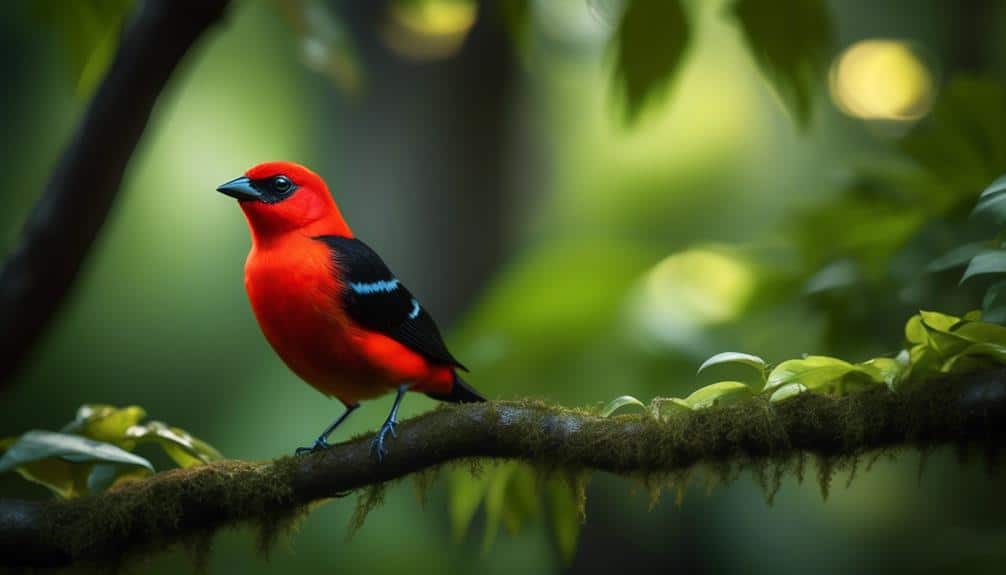
Every year, a vibrant visitor makes its way to Florida – the Scarlet Tanager. This stunning bird is known for its colorful plumage, which is predominantly scarlet with black wings and tail. The males boast a vibrant red body that stands out against the green foliage, while the females have a more subdued olive-green coloration.
The Scarlet Tanager is a neotropical migrant, meaning it breeds in North America and migrates to South America during the winter months. Its migratory patterns take it through Florida twice a year, making it a temporary resident of the state.
These birds can be spotted in forests and woodlands, where they forage for insects, fruits, and seeds. They've a distinct song that's often described as a series of short phrases followed by a long, descending note.
As a bird enthusiast, witnessing the Scarlet Tanager's annual visit is truly a sight to behold. Its vibrant plumage and migratory patterns make it a fascinating species to study and appreciate.
The Vermilion Flycatcher: A Rare Delight

Spotting a flash of fiery red amidst the trees, one can't help but be captivated by the rare delight of the Vermilion Flycatcher. This small, vibrant bird is a true gem among the avian species found in Florida. With its unique coloration and distinctive behavior, the Vermilion Flycatcher is a sight to behold.
Here are three fascinating facts about this rare bird sighting:
- Unique Coloration: The Vermilion Flycatcher is known for its striking red plumage, which covers its head, chest, and underparts. This vibrant hue is unlike any other bird found in Florida, making it instantly recognizable. Its back and wings are a contrasting shade of dark gray, creating a beautiful contrast. The male boasts the most vibrant colors, while the female has a more subdued appearance with a mixture of red and gray.
- Exquisite Hunting Techniques: As its name suggests, the Vermilion Flycatcher is an expert flycatcher. It perches on low branches or wires, patiently waiting for small insects to pass by. Once it spots its prey, it swiftly takes flight, capturing the unsuspecting insect mid-air with its sharp beak. These acrobatic hunting maneuvers showcase the bird's agility and precision.
- Year-round Resident: While the Vermilion Flycatcher is considered a rare bird sighting in Florida, it's a year-round resident in certain parts of the state. It prefers open woodlands, including pine forests and savannahs, where it can find plenty of insects to feed on. Despite its small size, this bird is known for its territorial behavior, defending its preferred hunting grounds from other flycatchers.
The Rose-breasted Grosbeak: A Colorful Migrant
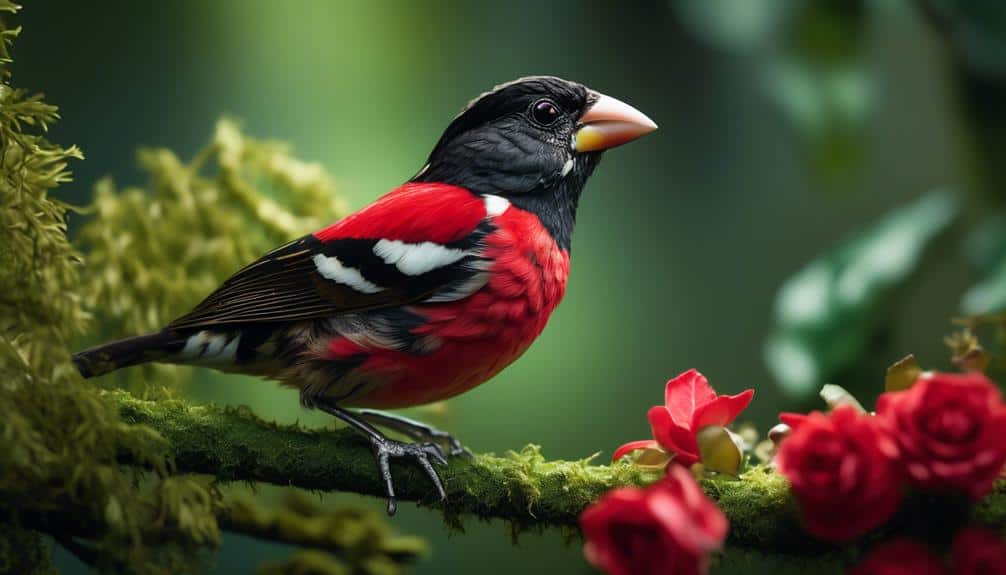
A migratory visitor to Florida, the Rose-breasted Grosbeak brings a burst of vibrant color to the state's avian population. This stunning bird is known for its striking plumage, with the males boasting a rosy-red breast and a jet-black head. The females, on the other hand, have a more subtle appearance, with streaks of brown and white. These colorful feathers are key to the Grosbeak's mating rituals, as they help attract potential mates.
The Rose-breasted Grosbeak is a long-distance migrant, spending its summers in the northern parts of North America and then flying south to Central and South America for the winter. Their migration patterns are intricate and fascinating, as they navigate hundreds of miles to reach their destinations. These birds rely on a combination of celestial cues, magnetic fields, and landmarks to guide them on their journey.
During migration, the Grosbeaks can be spotted in Florida as they make their way to their wintering grounds. They usually arrive in the state around April and May, and then depart in September and October. These transient visitors add a splash of color to the local bird population, giving birdwatchers and nature enthusiasts a unique opportunity to observe and appreciate their beauty.
The Red-headed Woodpecker: The Drummer of the Forest
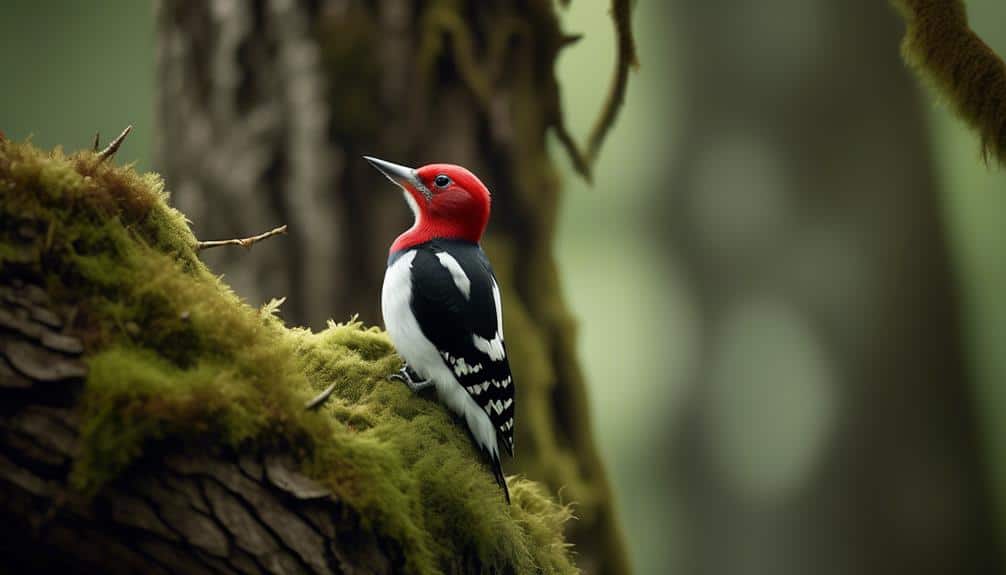
The Red-headed Woodpecker, known as the drummer of the forest, is a captivating bird species found in various habitats across North America. With its striking red head and black and white body, this woodpecker stands out among its feathery counterparts.
Here are three fascinating facts about the Red-headed Woodpecker:
- Woodpecker Behavior: The Red-headed Woodpecker is a skilled percussionist, using its strong beak to create a drumming sound on tree trunks. This behavior serves multiple purposes, including attracting mates, defending territory, and communicating with other woodpeckers. It's fascinating to observe their rhythmic tapping echoing through the forest, a true symphony of nature.
- Woodpecker Habitats: These woodpeckers can be found in a variety of habitats, including open woodlands, forests, and even urban areas with mature trees. They prefer areas with plenty of dead trees, as these provide abundant nesting and foraging opportunities. Their adaptability allows them to thrive in both natural and human-altered landscapes.
- Conservation Concerns: Despite their widespread distribution, the Red-headed Woodpecker faces several threats to its population. Loss of habitat due to deforestation and urbanization, as well as competition with invasive species for nesting sites, have led to a decline in their numbers. Conservation efforts are crucial to protect and preserve this charismatic species for future generations.
The Red-headed Woodpecker's unique behaviors and habitat preferences make it a remarkable species to study and admire. By understanding and appreciating their ecological roles, we can contribute to their conservation and ensure the continued presence of this drummer of the forest in our natural landscapes.
Frequently Asked Questions
What Is the Scientific Name of the Red Cardinal?
The scientific name of the red cardinal is Cardinalis cardinalis. Red cardinals have vibrant red plumage and a distinctive crest on their heads. They communicate with each other through a variety of vocalizations and body language.
How Many Different Species of Red-Breasted Birds Can Be Found in Florida?
In Florida, there are several different species of red-breasted birds. Their habitats vary, from forests to urban areas, and they exhibit diverse nesting behaviors. It is fascinating to study the unique characteristics of each species.
Are Red-Breasted Birds in Florida Considered Endangered or Threatened?
Red-breasted birds in Florida are not currently considered endangered or threatened. However, conservation efforts are essential to ensure their populations remain stable and to prevent future decline due to habitat loss.
What Is the Lifespan of the Scarlet Tanager?
The lifespan of the scarlet tanager is typically 5-6 years. They are neotropical migratory birds, breeding in North America and wintering in South America. They prefer mature forests for nesting.
Do Red-Breasted Birds in Florida Migrate During Certain Seasons?
Yes, red-breasted birds in Florida do migrate during certain seasons. They adapt to their environment by following migration patterns that allow them to find suitable habitats and food sources throughout the year.
Conclusion
In conclusion, the presence of red-breasted birds in Florida adds a vibrant and captivating element to the state's diverse avian population.
While some may argue that these birds are simply a result of migration patterns and not unique to Florida, it's important to acknowledge the rarity and beauty of species like the Vermilion Flycatcher and the Rose-breasted Grosbeak.
Their presence serves as a reminder of the intricate web of ecosystems and the incredible diversity found within the Sunshine State.

